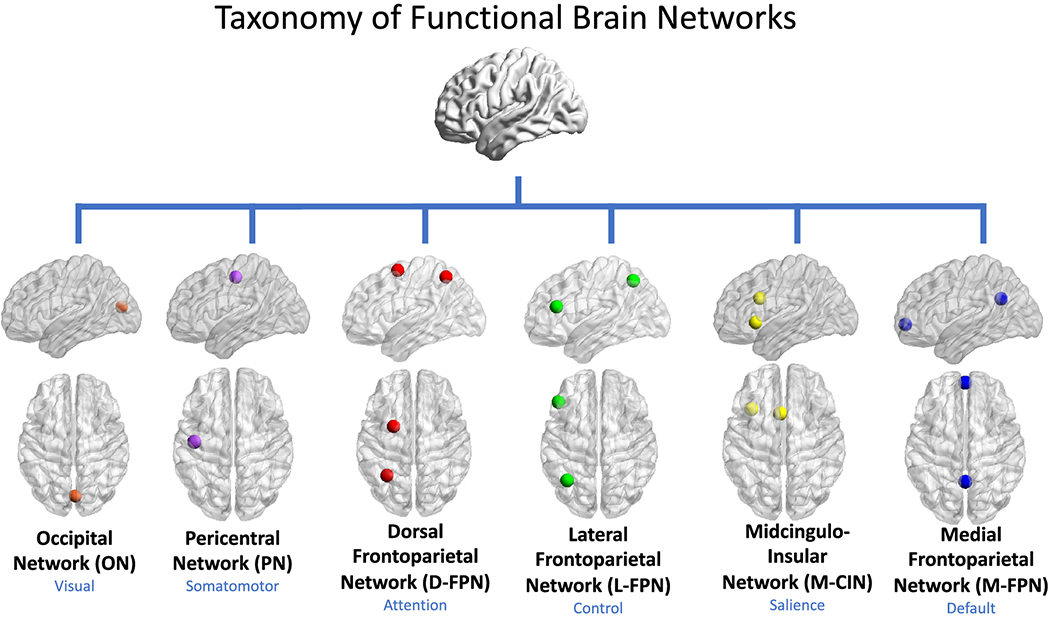Ecosystem#
Uganda’s place in the world is shaped by layers of integration, from its local ecosystems to the vast cosmic unknown. Locally, Uganda is a land of lakes, rivers, and forests, straddling the equator with a climate that enables both lush fertility and periodic ecological fragility. Regionally, its position in East Africa places it within historical migratory routes, trade networks, and geopolitical fault lines, where colonial partitions carved artificial boundaries that remain contested. In Africa, Uganda’s integration has been marked by its historical role in the Pan-African movement, its oscillation between isolation and alignment with continental struggles, and its function as both a recipient and driver of ideological and economic shifts. Globally, it has navigated the postcolonial world with the uneven agency of a nation balancing dependency and assertion, shaped by Cold War alignments, neoliberal economic policies, and a recurring struggle with external influence. Cosmically, Uganda exists in a realm where myths and celestial cycles remain embedded in cultural consciousness—its indigenous worldviews do not separate the land from the sky but see them as co-constitutive. The idea of extraterrestrial encounters, though speculative, feeds into existing structures of divinity and supernatural agency, where the unknown is not just feared but also ritualized. If Uganda were to encounter aliens, it would likely negotiate their existence through a framework of spirits, ancestors, and cosmic forces that already populate its epistemic universe. This relationship with divinity, both indigenous and imposed, remains one of Uganda’s most enduring conceptual ecosystems—colonial religions did not erase older structures but grafted themselves onto preexisting cosmologies, creating layered and often contradictory modes of belief.

Fig. 9 Agency. European-African relationships in the postcolonial period do not believe in the agency of the beneficiary. Instead of aid, transactional relationships would seem more peer-to-peer and thus more negotiable over time. Kemi talks about “guarding text carefully”, using conservative principles at 50:00/1:37:25. Just as Christianity may appropriate Isaiah 9:6 for its purposes, Africa have appropriated speaking in tongues, exorcism, and such items the align with traditional religions for their own purposes, items barely evident in, say, Anglicanism.#
The eye with which Uganda roves about this ecosystem is shaped by its historical experience of state formation, colonial imposition, and postcolonial trauma. Unlike European nation-states that emerged through industrial consolidation, Uganda’s worldview is one of negotiated plurality. It is an assemblage of kingdoms, clans, and decentralized societies that were forcibly drawn into a single political entity. The colonial period imposed an external gaze upon this plurality, demanding that Uganda see itself as a structured, governable unit under European tutelage. Independence did not remove this gaze so much as internalize it, with Uganda’s political history oscillating between efforts to reclaim indigenous authority and attempts to mimic external models of governance. Its political imagination remains haunted by the rupture of colonialism, where Western legalistic and economic frameworks coexist uneasily with indigenous modes of power and reciprocity. The question is not whether Uganda possesses agency, but what kind of agency it claims: does it seek to replicate the state-centered rationalism imposed upon it, or does it construct alternative pathways that integrate its pluralistic past with its aspirations for the future?
The navigation of this ecosystem has been fraught with contradictions, as Uganda has moved between the poles of self-determination and dependency. In its early kingdoms, power was distributed through kinship, alliance, and tribute, rather than rigid bureaucratic control. Colonization disrupted this by centralizing power in ways that often privileged certain groups over others, a trend that continued into postcolonial rule. The country’s history is thus a pendulum swing between moments of relative autonomy and periods of external control, whether through colonial administrators, Cold War patrons, or contemporary global finance. This oscillation creates an existential tension: does Uganda act as an agent within history, shaping its own destiny, or as a beneficiary of forces greater than itself, whether those be international institutions or divine will? The answer is not straightforward, as Uganda’s political landscape has often been characterized by leaders who simultaneously claim divine right and geopolitical pragmatism. The history of Uganda, as narrated by Karugira, leans heavily on political actors—Obote, Amin, and their predecessors—who navigated these contradictions, sometimes as visionaries, sometimes as opportunists, and often as both.
Kemi Badenoch
Nihilism, Deconstruction, Perspective, Awareness, Reconstruction, Integration
Lens
Fragmented, United
Hate, Negotiate, Trust
Cacophony, Outside, Emotion, Inside, Symphony
The combinatorial space within which Uganda negotiates its existence is defined by a series of overlapping boundaries: geological, demographic, and conceptual. Geologically, its position within the Great Rift Valley and the Nile Basin makes it a place of both abundance and strategic vulnerability. Its demographic composition, shaped by historical migrations, colonial ethnic categorizations, and post-independence contestations, renders it a nation that has never been reducible to a single identity. The self, in Uganda’s context, is a fluid and negotiated entity, shaped by clan affiliations, religious identities, and shifting political loyalties. The nonself, whether represented by colonial rulers, foreign investors, or internal political rivals, is often constructed as an existential threat, sometimes leading to cycles of exclusion and violence. The negotiated space between self and nonself is where Uganda’s most enduring struggles have played out—whether in the form of reconciliation efforts, decentralization policies, or attempts at national unity. The very act of defining who belongs and who does not has been a recurring theme in its history, as evident in the political manipulations Karugira traces, where colonial legacies of ethnic differentiation were weaponized by post-independence leaders.
Rituals are the glue that binds these elements together, serving as a means of stabilizing an otherwise chaotic historical trajectory. Precolonial Uganda had deeply embedded rituals of kingship, justice, and social cohesion, many of which were disrupted but not entirely erased by colonial rule. The Christian and Islamic traditions that followed brought their own ritual frameworks, which, rather than replacing indigenous systems, often merged with them in unpredictable ways. Political rituals—whether in the form of coronations, military parades, or state funerals—serve as moments where Uganda reaffirms its collective identity, even if that identity remains fractured. The history Karugira presents is one in which these rituals often take on a dual function: they are both mechanisms of control and acts of resistance. The colonial administrators used rituals of governance to cement their authority, just as independence movements used their own performative acts to reclaim agency. Even in the most violent moments of Uganda’s history, ritual has persisted, sometimes as a means of justifying power, sometimes as a way of surviving it.

Fig. 10 Uganda. It’s ecosystem, worldview, navigation, space, rituals.#
Karugira’s The Political History of Uganda provides a detailed account of Uganda’s past, but its framing is constrained by a political lens that does not fully account for the deeper, more structural dynamics at play. By focusing on political actors and regimes, it risks reducing history to a sequence of rulers and their policies rather than understanding Uganda as a layered, dynamic ecosystem. The religio-political polarization he highlights is undeniably central, but it is not merely a product of colonial manipulation—it is part of a longer historical process in which Uganda has constantly negotiated the intersections of power, belief, and identity. While the book offers valuable insights into the seeds of military rule and the colonial origins of Uganda’s modern state, it does not fully explore how these structures interact with the country’s broader ecological, cultural, and cosmological realities. To understand Uganda’s past and future, one must go beyond the realm of political history and engage with the deeper networks of meaning, belonging, and transformation that have shaped its trajectory.
Show code cell source
import numpy as np
import matplotlib.pyplot as plt
import networkx as nx
# Define the neural network layers
def define_layers():
return {
'Suis': ['DNA, RNA, 5%', 'Peptidoglycans, Lipoteichoics', 'Lipopolysaccharide', 'N-Formylmethionine', "Glucans, Chitin", 'Specific Antigens'],
'Voir': ['PRR & ILCs, 20%'],
'Choisis': ['CD8+, 50%', 'CD4+'],
'Deviens': ['TNF-α, IL-6, IFN-γ', 'PD-1 & CTLA-4', 'Tregs, IL-10, TGF-β, 20%'],
"M'èléve": ['Complement System', 'Platelet System', 'Granulocyte System', 'Innate Lymphoid Cells, 5%', 'Adaptive Lymphoid Cells']
}
# Assign colors to nodes
def assign_colors():
color_map = {
'yellow': ['PRR & ILCs, 20%'],
'paleturquoise': ['Specific Antigens', 'CD4+', 'Tregs, IL-10, TGF-β, 20%', 'Adaptive Lymphoid Cells'],
'lightgreen': ["Glucans, Chitin", 'PD-1 & CTLA-4', 'Platelet System', 'Innate Lymphoid Cells, 5%', 'Granulocyte System'],
'lightsalmon': ['Lipopolysaccharide', 'N-Formylmethionine', 'CD8+, 50%', 'TNF-α, IL-6, IFN-γ', 'Complement System'],
}
return {node: color for color, nodes in color_map.items() for node in nodes}
# Define edge weights
def define_edges():
return {
('DNA, RNA, 5%', 'PRR & ILCs, 20%'): '1/99',
('Peptidoglycans, Lipoteichoics', 'PRR & ILCs, 20%'): '5/95',
('Lipopolysaccharide', 'PRR & ILCs, 20%'): '20/80',
('N-Formylmethionine', 'PRR & ILCs, 20%'): '51/49',
("Glucans, Chitin", 'PRR & ILCs, 20%'): '80/20',
('Specific Antigens', 'PRR & ILCs, 20%'): '95/5',
('PRR & ILCs, 20%', 'CD8+, 50%'): '20/80',
('PRR & ILCs, 20%', 'CD4+'): '80/20',
('CD8+, 50%', 'TNF-α, IL-6, IFN-γ'): '49/51',
('CD8+, 50%', 'PD-1 & CTLA-4'): '80/20',
('CD8+, 50%', 'Tregs, IL-10, TGF-β, 20%'): '95/5',
('CD4+', 'TNF-α, IL-6, IFN-γ'): '5/95',
('CD4+', 'PD-1 & CTLA-4'): '20/80',
('CD4+', 'Tregs, IL-10, TGF-β, 20%'): '51/49',
('TNF-α, IL-6, IFN-γ', 'Complement System'): '80/20',
('TNF-α, IL-6, IFN-γ', 'Platelet System'): '85/15',
('TNF-α, IL-6, IFN-γ', 'Granulocyte System'): '90/10',
('TNF-α, IL-6, IFN-γ', 'Innate Lymphoid Cells, 5%'): '95/5',
('TNF-α, IL-6, IFN-γ', 'Adaptive Lymphoid Cells'): '99/1',
('PD-1 & CTLA-4', 'Complement System'): '1/9',
('PD-1 & CTLA-4', 'Platelet System'): '1/8',
('PD-1 & CTLA-4', 'Granulocyte System'): '1/7',
('PD-1 & CTLA-4', 'Innate Lymphoid Cells, 5%'): '1/6',
('PD-1 & CTLA-4', 'Adaptive Lymphoid Cells'): '1/5',
('Tregs, IL-10, TGF-β, 20%', 'Complement System'): '1/99',
('Tregs, IL-10, TGF-β, 20%', 'Platelet System'): '5/95',
('Tregs, IL-10, TGF-β, 20%', 'Granulocyte System'): '10/90',
('Tregs, IL-10, TGF-β, 20%', 'Innate Lymphoid Cells, 5%'): '15/85',
('Tregs, IL-10, TGF-β, 20%', 'Adaptive Lymphoid Cells'): '20/80'
}
# Define edges to be highlighted in black
def define_black_edges():
return {
('PRR & ILCs, 20%', 'CD8+, 50%'): '20/80',
('PRR & ILCs, 20%', 'CD4+'): '80/20',
('CD4+', 'TNF-α, IL-6, IFN-γ'): '5/95',
('CD4+', 'Tregs, IL-10, TGF-β, 20%'): '51/49',
('CD8+, 50%', 'TNF-α, IL-6, IFN-γ'): '49/51',
('CD8+, 50%', 'Tregs, IL-10, TGF-β, 20%'): '95/5',
}
# Calculate node positions
def calculate_positions(layer, x_offset):
y_positions = np.linspace(-len(layer) / 2, len(layer) / 2, len(layer))
return [(x_offset, y) for y in y_positions]
# Create and visualize the neural network graph
def visualize_nn():
layers = define_layers()
colors = assign_colors()
edges = define_edges()
black_edges = define_black_edges()
G = nx.DiGraph()
pos = {}
node_colors = []
# Create mapping from original node names to numbered labels
mapping = {}
counter = 1
for layer in layers.values():
for node in layer:
mapping[node] = f"{counter}. {node}"
counter += 1
# Add nodes with new numbered labels and assign positions
for i, (layer_name, nodes) in enumerate(layers.items()):
positions = calculate_positions(nodes, x_offset=i * 2)
for node, position in zip(nodes, positions):
new_node = mapping[node]
G.add_node(new_node, layer=layer_name)
pos[new_node] = position
node_colors.append(colors.get(node, 'lightgray'))
# Add edges with updated node labels
edge_colors = []
for (source, target), weight in edges.items():
if source in mapping and target in mapping:
new_source = mapping[source]
new_target = mapping[target]
G.add_edge(new_source, new_target, weight=weight)
edge_colors.append('black' if (source, target) in black_edges else 'lightgrey')
# Draw the graph
plt.figure(figsize=(12, 8))
edges_labels = {(u, v): d["weight"] for u, v, d in G.edges(data=True)}
nx.draw(
G, pos, with_labels=True, node_color=node_colors, edge_color=edge_colors,
node_size=3000, font_size=9, connectionstyle="arc3,rad=0.2"
)
nx.draw_networkx_edge_labels(G, pos, edge_labels=edges_labels, font_size=8)
plt.title("OPRAH™: Lateral", fontsize=18)
plt.show()
# Run the visualization
visualize_nn()

Fig. 11 Adaptation: Dynamic Capability including Tregs, PD-1, TNF-α. For the eyes of the Lord run to and fro throughout the whole earth, to shew himself strong in the behalf of them whose heart is perfect toward him. Herein thou hast done foolishly: therefore from henceforth thou shalt have wars. Source: 2 Chronicles 16: 8-9. The grammar of these visuals is plain: there’s a space & time for the cooperative rhythm, transactional, and adversarial. The antiquarian mode’s great error is in reverence as an end in-its-self, a static mode tied to historical victories and successes. This risks failing to recognize when elements of “self” need appraisal in case viral or malignant transformation have rendered them adversarial. But it also activately protects “self” in the midst of hightened vigilance, via a TPN PD-L1.#

